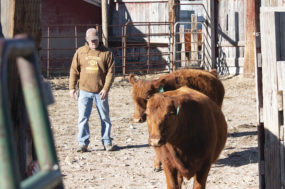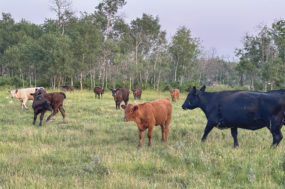The target of a body condition score of “6” is a narrow, but very important target to hit. Reaching this target allows the heifer the best opportunity to provide adequate colostrum to the baby, repair the reproductive tract, return to heat cycles, rebreed on time for next year and continue normal body growth.
Exceeding the target may result in excess fat in the birth canal and cause some increase in calving difficulty. From now until calving time, the heifers will need to be gaining about one pound per head per day, assuming they are in good body condition coming out of summer.
Heifers will need supplemental protein, if the major source of forage in the diet is Bermudagrass, native pasture or grass hay. If the forage source is adequate in quantity and average in quality (6-9 percent crude protein), heifers will need about two pounds of a high protein (38-44 percent CP) supplement each day.
This will probably need to be increased with higher quality hay (such as alfalfa) or additional energy feed (20 percent range cubes) as winter weather adds additional nutrient requirements. Soybean hulls or wheat mids may also be used to insure adequate energy intake of pregnant heifers.
Wheat pasture (if adequate rainfall produces growth) can be used as a supplement for pregnant replacement heifers. Using wheat pasture judiciously makes sense for pregnant heifers for two reasons. Pregnant heifers consuming full feed of wheat pasture will gain at about three pounds per head per day. If they are on the wheat too long, the can become very fat and cause calving difficulty.
If wheat pasture is used for bred heifers, use it as a protein supplement by allowing the heifers access to the wheat pasture on at least alternate days. Some producers report that one day on wheat pasture and two days on native or Bermuda will work better.
This encourages the heifers to go rustle in the warm season pasture for the second day, rather than just stand by the gate waiting to be turned back to the wheat. Whatever method is used to grow the pregnant replacement heifers, plan to have them in good body condition (BCS = 6) by calving so they will grow into fully developed, productive cows.
Body condition scores can be studied by downloading the Oklahoma State University Fact Sheet ANSI-3283 “Body Condition Scoring of Beef Cows." ![]()
Glenn Selk is an emeritus animal scientist for Oklahoma State University Extension. This originally appeared in the Cow/Calf Corner newsletter from the Oklahoma Cooperative Extension Service.








